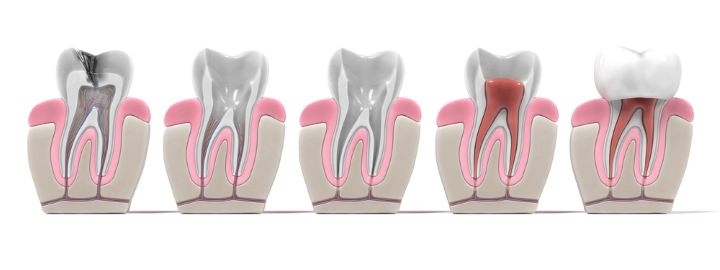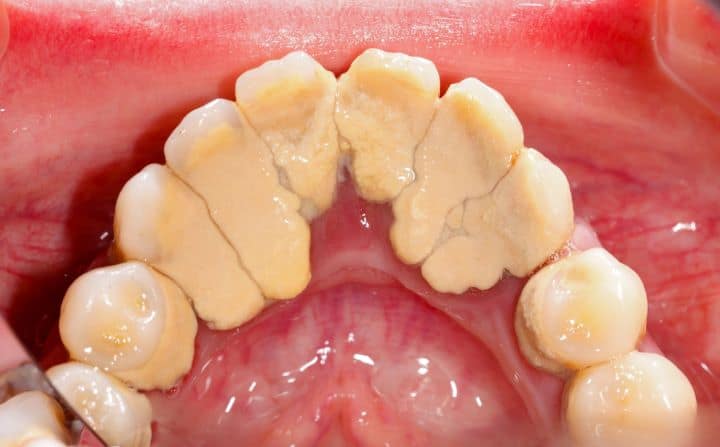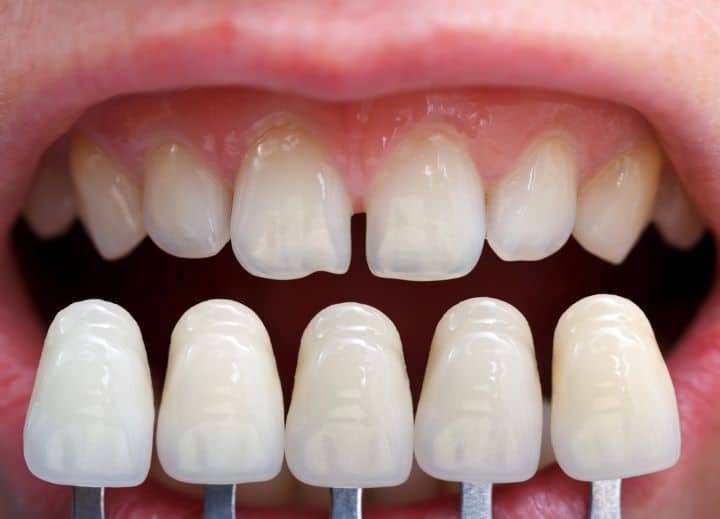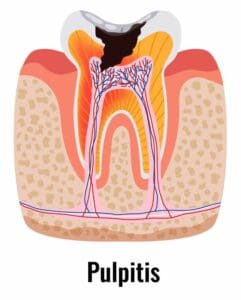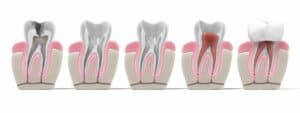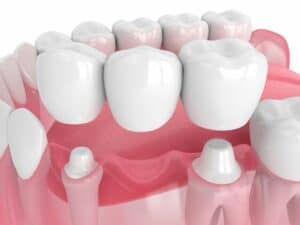You’ve just learned from your regular dental checkup that you’re desperately in need of a tooth filling.
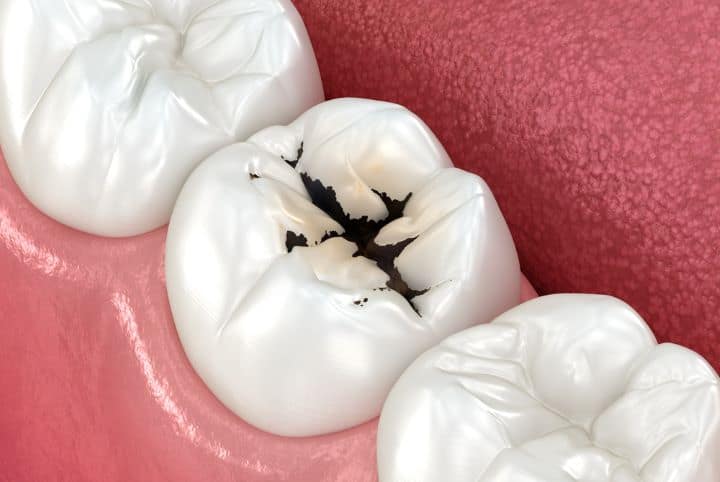
Don’t worry – you’re not alone. Most people will need at least one filling in their lifetime. However, it might be a good idea to know what to expect.
What does a filling entail? Will the aesthetics live up to your expectations? Do you know your options if you plan to proceed with this procedure? What is it going to cost you and do you have to pay out-of-pocket?
These are details that you need to consider before you get a fill. The American Dental Association encourages you to discuss your treatment options with your dentist to customize a plan that best fits your unique dental needs.
Understanding Dental Fillings
Getting a filling means that an oral health professional uses special dental cement to fill your damaged tooth. Fillings are used to replace natural tooth substances when they are damaged by tooth decay, worn down due to old age, or fracture due to trauma.
If your teeth have been compromised by decay, the decayed portion will first be removed, the tooth hole will then be thoroughly cleaned and dried, and finally a restorative material will be used to fill the space.
Cavities caused by tooth decay become susceptible to temperature, pressure, and bacterial invasion. Therefore, not only is the dental filling material placed to protect the tooth from hypersensitivity, but also to prevent the further spread of decay.
Dental Filling types
There is no one-size-fits-all solution when it comes to fillings. When a fill is needed, there are a myriad of different filling materials you can choose from to tackle your dental issues.
The choice of filling material depends on several factors, as each type has its pros and cons. Some of these factors include the location of the tooth, the primary bite action of the tooth, and the size of the cavity.
The types of restorations are widely divided into two categories: direct and indirect.
Direct fillings
Direct restorations, as the name suggests are directly fabricated in the mouth. They can be placed in your tooth in a single visit to the dentist. The most common types are amalgam, composite, and glass ionomer.
Amalgam / Silver fillings
Dental amalgam is made from a mixture of various metals, including mercury, silver, copper, tin, and zinc. They are often referred to as “silver-colored fillings” because of their silver-like appearance.

They are highly durable and have been in use for more than a century, making them a reliable option.
This kind of filling is fairly common and is used to repair large cavities, especially in the back teeth. They are also more affordable than their modern-day counterparts.
The drawback of amalgam is that it requires a larger portion of your tooth substance to be removed to help the restoration stay in place. It is also conspicuous in appearance and may not be a desired option for people who prioritize aesthetics.
Additionally, research has found that your body may absorb a small amount of mercury from this filling. However, the U.S. Food and Drug Administration (FDA) deems silver amalgam fillings safe for adults and children over the age of 6.
Composite fillings
Composite resin fillings or white fillings are made of a combination of glass or quartz fillers. These tooth-colored composite fillings look and feel like your natural teeth, so they can be used for fillings both in the front and back teeth.
It has a high fracture resistance and can easily withstand moderate forces for chewing. These types of materials are commonly used for cosmetic dental treatments such as veneers or to fix mild to moderately broken or decayed teeth.
The shade of the resin is matched to your other teeth using a shade guide. This allows these resin restorations to look more natural. Composite is then glued to the surface of the tooth in a process known as bonding.
Some forms of light-curing resin will require treatment with a visible blue light to allow the material to harden. This is known as curing. Once the material has bonded to the tooth’s surface, the dentist will then “cure” the composite material to the desired depth.
They are less durable and do not last much longer than traditional fillings like amalgam. They can also become stained over time with highly pigmented food substances like beetroot, coffee, and red wine.
Glass ionomer cement
Glass ionomer cement (GIC) is a restorative material that is made from a combination of glass powder and an organic acid, particularly polyacrylic acid that acts as a setting agent. GIC is widely known for its ability to chemically bond to the tooth.
According to the Cleveland Clinic, these types of restorations are mostly used for fillings below the gum line as they release fluoride and can help protect the tooth from further tooth decay.

They are weaker than composite resin and are more susceptible to wear and fracture. That being said, they can last for about 5 years and are affordable alternatives to tooth-colored fill-up materials.
Glass ionomer sealants are another form of restoration that is typically used on erupting molars in children to act as a thin protective coating against bacteria.
The Centers for Disease Control and Prevention (CDC) reports that “school-age children without sealants are three times more likely to have cavities than children with sealants.”
Indirect filling
Indirect fillings are considered to be indirect because they are fabricated outside the mouth.
This means that indirect fillings are similar to direct ones except for the fact that they are made in a dental laboratory and will probably require more than one visit to the dental office to complete.
There are two different kinds of indirect restorations: inlays and onlays. Onlays are used to fill larger cavities that involve only the cusps of the tooth. On the other hand, inlays are used to fill small gaps in the tooth that are between the cusps.
Porcelain and gold are popular indirect restoration materials available in the market today.
Ceramic fillings
Ceramic or porcelain fillings are custom-made restorations that are made of ceramic polymer. Rather than being placed into an open cavity, they are shaped and hardened in a lab before being cemented permanently onto your teeth.
These fillings are similar to composite ones as they are also a type of tooth-colored fillings. They are also matched to your tooth color like the resin ones. However, they are relatively more resistant to staining than composite resin material.
They are usually preferred for the back teeth which have lost their chewing function due to decay or trauma. Nevertheless, they can also be used for front teeth as they are cosmetically superior to others. On average, porcelain restorations can last for more than 15 years
Gold fillings
These are similar to composite or tooth-colored fillings except that they involve the usage of gold to restore holes in your teeth.
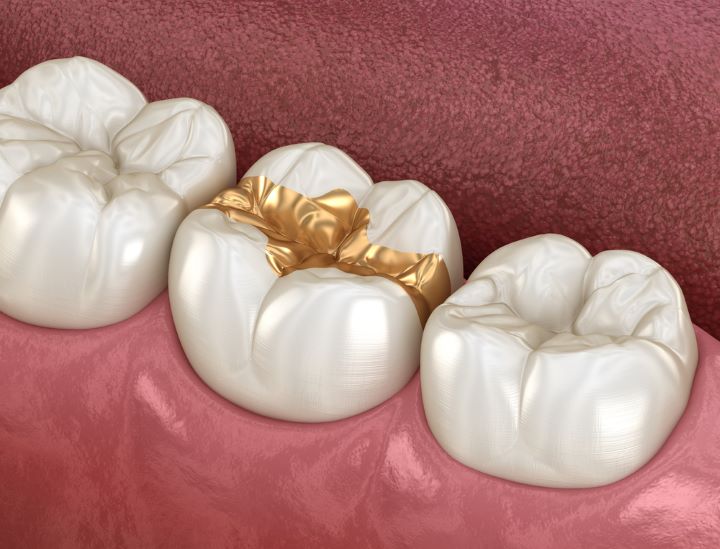
They are composed of an alloy of gold, copper, and other metals including silver and platinum.
The placement of gold fillings is done similarly to porcelain. On the first visit, impressions are taken of the tooth and sent to the lab to manufacture the restoration. In the next visit, the fill-up material is placed onto the tooth.
They are used for fillings that involve the loss of a large area of tooth substance. They are much more durable than other types of restorative materials. The ADA informs that they can last 20 years or more but are arguably the most expensive kind of fill-up material.
Alternatively, direct placement of gold is also possible wherein this restoration is placed into small fillings in the form of a gold foil. This can be done in a single visit, like amalgam or composite restorations.
Other types of filling materials
Temporary filling
Sometimes a direct or indirect restoration is not what your dentist considers best for your oral health. In these cases, a temporary restorative material is used to restore the tooth until a permanent solution is sought. These are, of course, semi-permanent and not meant to last.
Your dental professional may put in a temporary restoration to treat a painful tooth cavity during an emergency. You will have to visit the office within a week or two to get your temporary filling replaced with a permanent one.
The various types of temporary restorations include zinc oxide eugenol, Cavit, zinc phosphate cement, or other intermediate restorative materials. Some of these materials can harden when mixed with saliva. The longevity of the restoration depends on the material used.
Do you need a filling?
Contrary to popular belief, fillings are done not just for decay but for other dental anomalies as well. You can only determine if you need restorations if you meet with your dentist and have the filling process started.
You may need a fill-up if you’re experiencing these signs and symptoms:
- Pain or sensitivity of the tooth with or without pressure
- Visible decay or hole in the tooth
- A sharp or jagged feeling in the tooth when your tongue glazes over it
- Broken tooth or portion of the tooth due to trauma
- Flattened tooth surfaces due to teeth clenching
- Wear and tear of the tooth due to aging
- Cracked tooth surface even if the tooth is not so severely damaged
- Discoloration of the tooth with or without decay
Dental filling procedure
The first thing your dentist does when you visit the dental office is to examine the affected tooth to assess the severity of the damage.
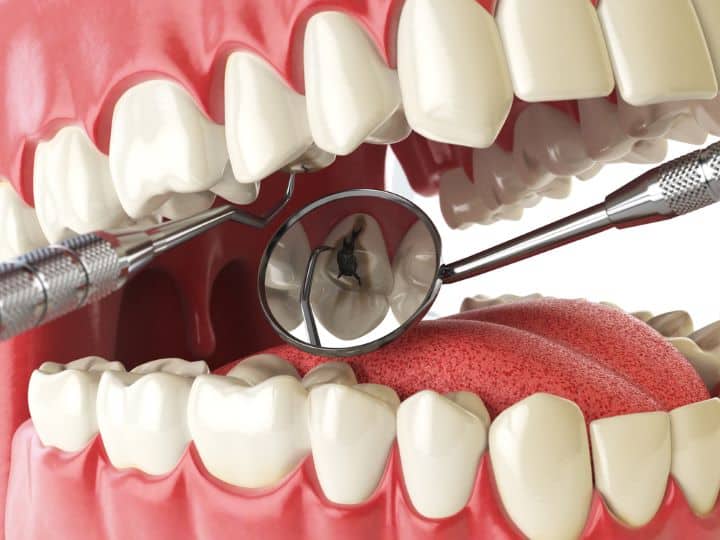
Then, they will numb the tooth and surround the soft tissues by applying local anesthetic or desensitizing agent to the tooth.
Next, they will start filling by cleaning the cavity using a drill or laser to remove the decayed area. The area will be thoroughly probed to determine if all the decay has been removed and if there is adequate space for the filling.
The shape of the tooth is typically altered depending on the size of the tooth hole. The dentist makes sure that much sound tooth structure remains to support a filling. The material is then packed in, the excess trimmed off, and finally polished.
The placement of a filling is done so that no air bubbles seep down between the filling and the tooth. For indirect onlays or inlays, an impression is taken of the affected tooth. The impression is then sent to a dental laboratory and requires two to three days to complete.
Benefits of Dental Fillings
Getting dental restorations for your injured or damaged teeth has many benefits like:
- Restores the tooth structure: They can be used to repair broken, ground down, or decayed teeth.
- Fillings are strong: Fillings can last a long time, usually between seven and fifteen years, depending on what they are made of. Your oral health provider can tell if your filling is wearing off or old.
- Enhances the strength of your teeth: Fillings are also great at reinforcing your natural teeth, strengthening the tooth material, and making them less prone to fracturing.
- Prevent further decay: Fillings usually treat a cavity by stopping it from growing so it can better your chances of maintaining a healthy dentition.
- Improves oral health: Getting early dental fillings may also be preventative as you can prevent the need for larger ones in the future.
Aftercare and Maintenance of tooth fillings
It is normal to feel sensitivity or pain after a dental filling. A newly filled tooth can hurt, especially, if the filling is large is large. This could mean that the filled tooth is simply passing along pain signals to other teeth. However, it should subside within a week or two.
If the pain is unbearable, especially during biting even after a few weeks, it might be because the restorative material itself is too high. In this case, you might need to get your filling reshaped.
It is best to avoid consuming any hard, sticky, or chewy foods for up to a week or so after any type of restorative dental work. Avoid grinding your teeth as clenching can cause dental fillings to wear away.
New fillings that fall out unexpectedly will need to be replaced immediately. You should also visit a dentist if your filling breaks as the prolonged and uneven distribution of pressure can cause the tooth to crack under the restoration.
Brushing and flossing should be done as usual after a restoration.
Cost and Dental Insurance Coverage
On average, the cost of dental fillings in the U.S. are as follows:
- Composite fillings: $90-$300 (per tooth)
- Glass Ionomer fillings: $90-$300 (per tooth)
- Silver amalgam fillings: $50-$200 (per tooth)
- Gold fillings: $500-$4,500 (per tooth)
- Porcelain fillings – $700 – $1,500 (per tooth)
As you can observe from the figures above, the price of the silver filling is the lowest, making them the budget-friendly restorative option for you. Dental insurance plans cover most of these costs.
Conclusion
Fillings are made to protect your teeth from harmful triggers both internally as well as externally.
You must get your cavity filled as soon as possible if you suspect that you might need it. Seek dental care immediately to address your concerns so that you can nip your dental problems in the bud!

